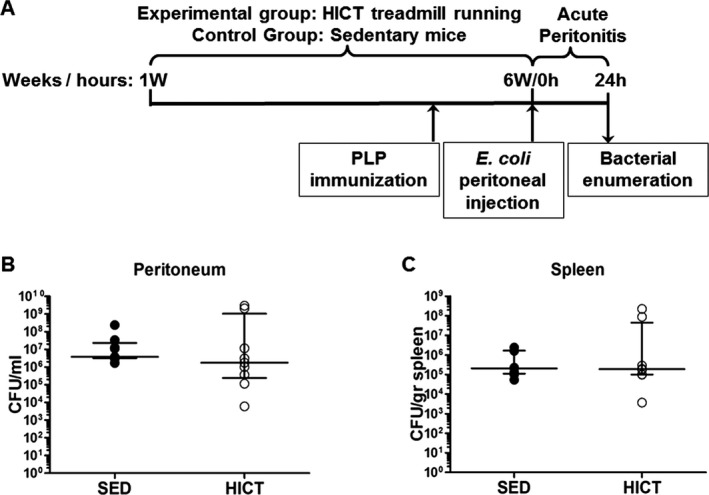Figure 7.

High‐intensity training sustains immune responses to acute peritoneal Escherichia coli bacterial infection. (A) Experimental outline. Healthy mice were subjected to a 6 week‐ high‐intensity treadmill running program (HICT, n = 9). Sedentary (SED, n = 9) mice served as controls. At the 6th week of the training program, HICT and SED mice were immunized with the autoantigen proteolipid (PLP) peptide. At the end of the 6th week, 4 days following PLP immunization, HICT and SED mice were intraperitoneally injected with E.‐coli bacteria to induce acute peritonitis. Twenty‐four hours after E. coli infection mice were sacrificed and bacterial enumeration was performed in their peritoneal fluid and spleens. (B and C) Bacterial propagation in mice in the acute‐peritonitis‐sepsis model. Bacterial counts assessed (n = 9) at 24 h in peritoneal fluid (B) and in spleens indicating systemic infection (C). Data are represented as median ± interquartile range.
